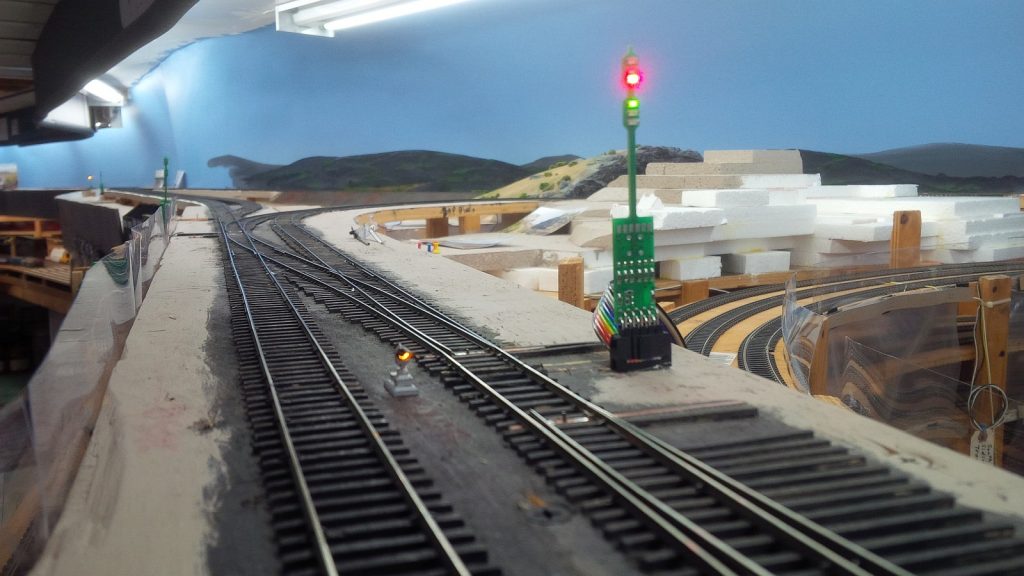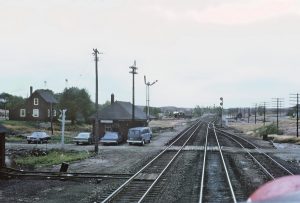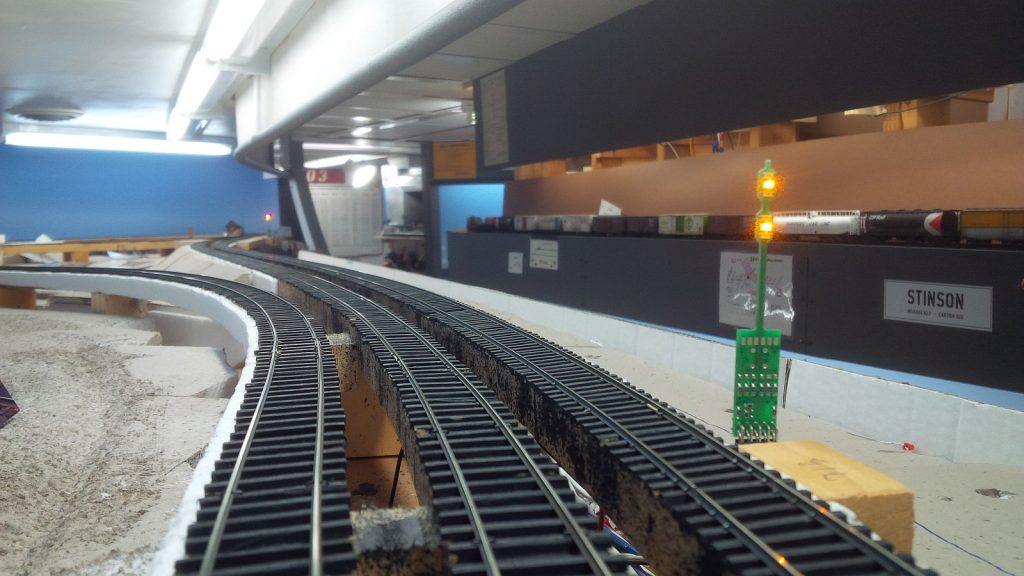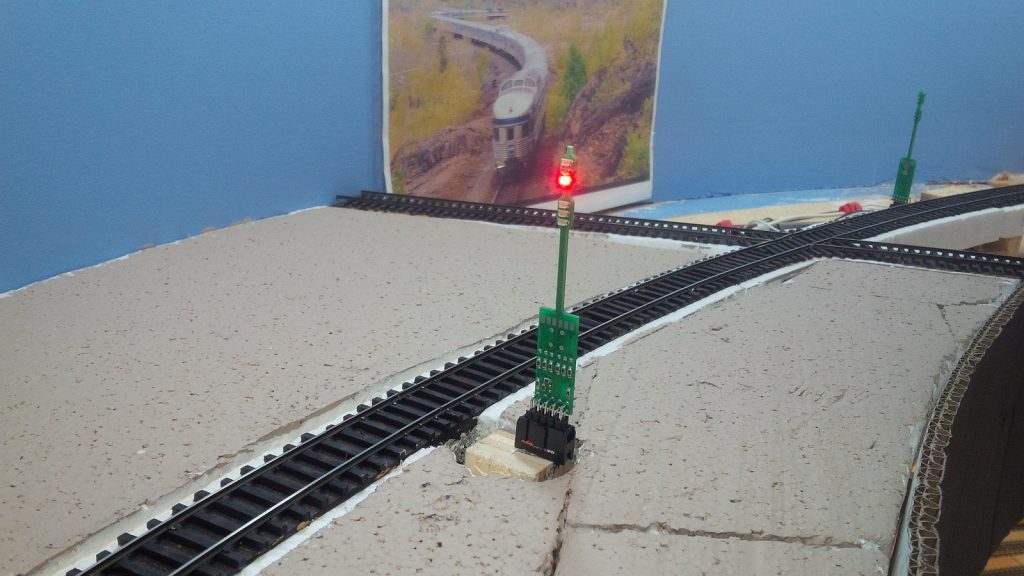Our big push for the Doubleheaders Tour this past March was to finally fill in the scene at Romford ON, the junction where the Parry Sound Sub from Toronto joins in to the Cartier Sub. This finally enclosed and hid the helix we had built in this corner of the layout that carried the tracks from the Parry Sound Sub staging yard to the upper level deck where Romford is situated. But really the scenery was just roughed in at the time, and many more details were required to finish the area. Our upcoming Fall Open House has provided us with a cause to continue the scenic efforts from here further down towards Coniston ON (diamond crossing with the CN Bala Sub), and to populate Romford with more details.
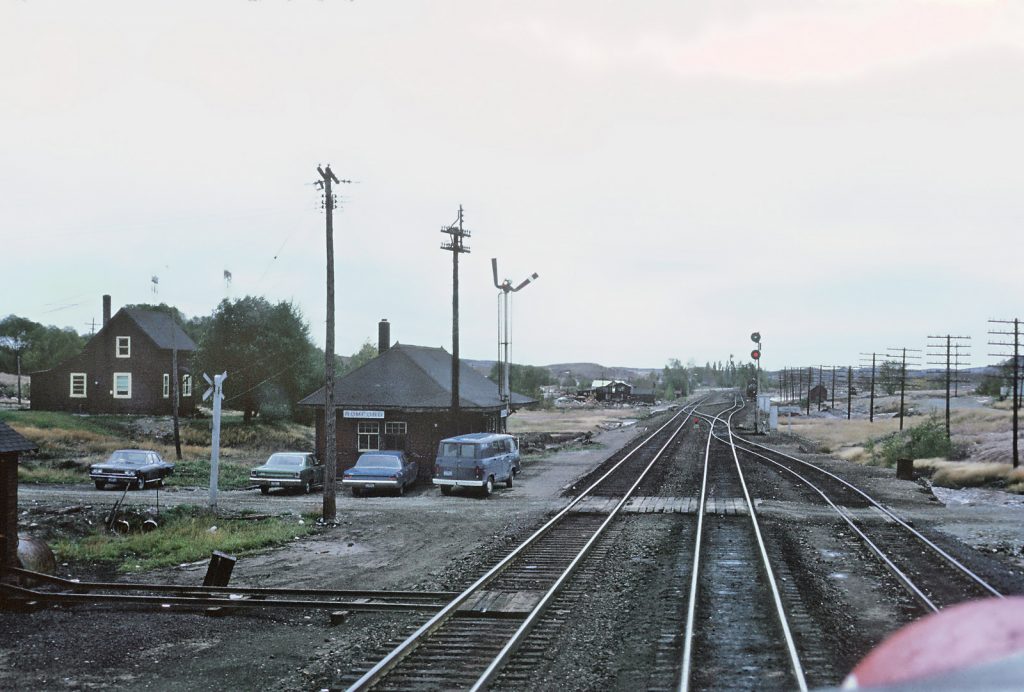
Approaching Romford junction in the cab of the Toronto Section of the ‘Canadian’ at Sudbury, ON on 06 October 1971 (Roger Puta photo – Marty Bernard collection)
Being a mainline junction, Romford was a controlled interlocking. In the 1970s Centralized Traffic Control (CTC) governed train movements over the Cartier Sub from this point (mileage 72.4) eastward to North Bay ON (mileage 0). Westward for the six miles between here and Sudbury, the Cartier Sub was double-tracked with Automatic Block System (ABS) signals protecting movements in one direction only (right-hand running). The Parry Sound Sub travelling south was single-track ABS territory. Because the CTC section began, or ended (depending on which way you were going) at this interlocking, dispatchers would refer to this spot as ‘Begin/End CTC Romford’.
Beyond the obvious signals, real life interlockings are filled with all sorts of trackside details such as large signal bungalows, relay cabinets, battery vaults, electric switch motors, and if you’re railroading in Canada; switch heaters, and associated fuel tanks. With this in mind, we felt further enhancement of this scene should be done before our next open house.
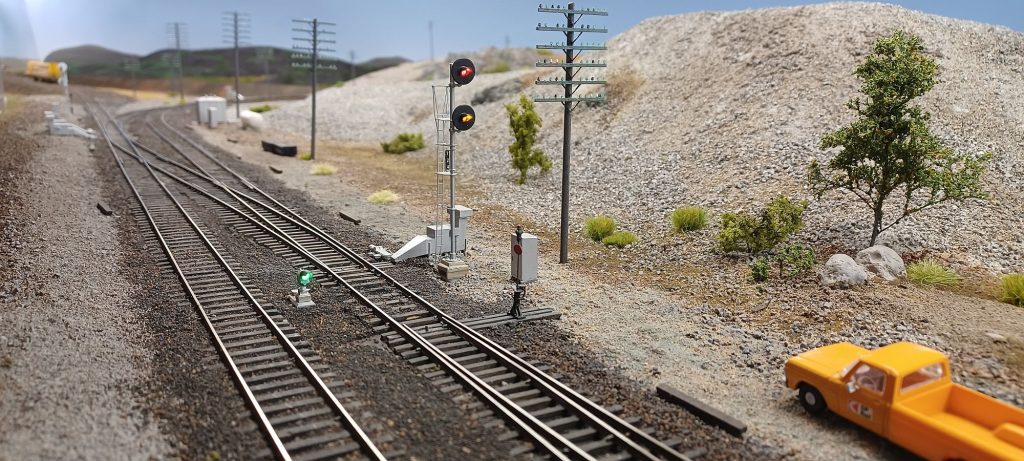
Looking east from signal 724 – Romford. From this point east to North Bay, the CP Cartier Sub was CTC territory.
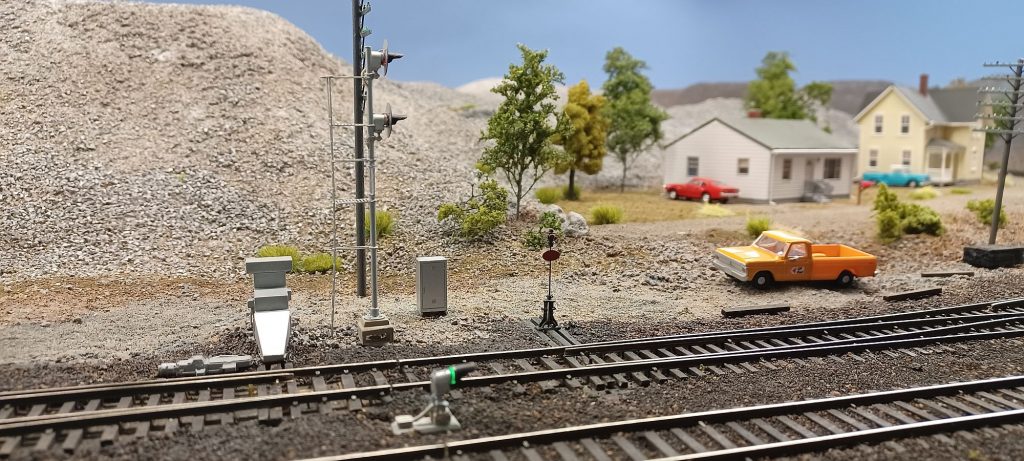
Signal 724 and its companion dwarf signal, along with a GRS model 5H dual-control switch motor, an oil-fired switch heater (it gets very cold here in winter), and signal relay cabinet. The old-school switch stand here guards a storage track, which is obviously controlled manually by crews.
We are still waiting for the actual station to be completed, along with a custom-built cantilever signal bridge that is required to elevate signal 1217 over the Parry Sound Sub (both are in development). But in the mean time with telephone poles added, more vegetation and ground cover, and all these interlocking details, we are at a level where Romford can almost be called complete.
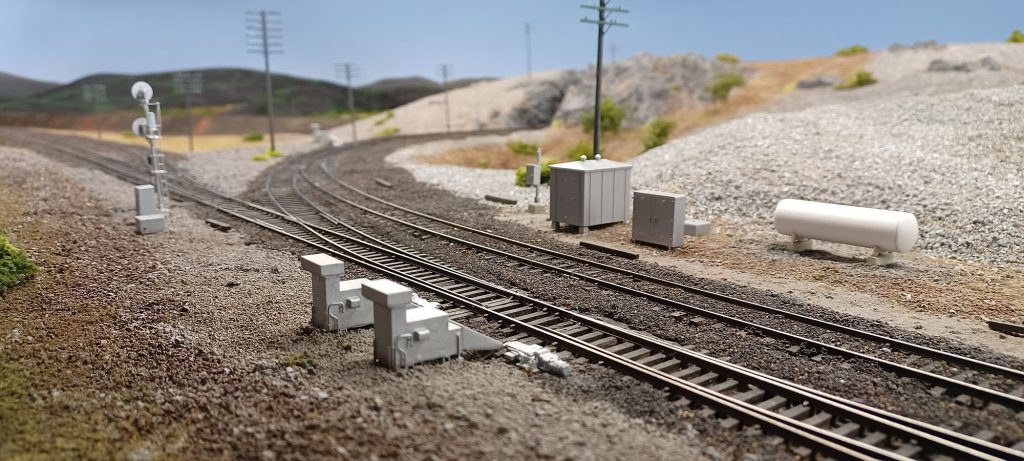
Guarded by signal 723 (westward signals are odd-numbered, and eastward even) this area of the junction is full of assorted CTC details. The Parry Sound Sub to Toronto is the line curving to the south here. A cantilever signal bridge that governs this line will be added in the future.
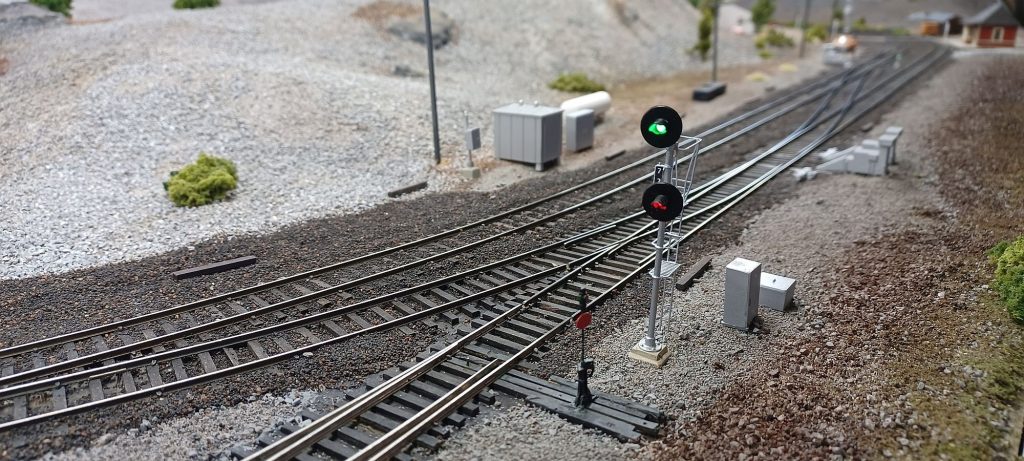
Signal 723 with associated relay cabinet and a battery vault. The manual switch stand here controls the Romford set-off track.
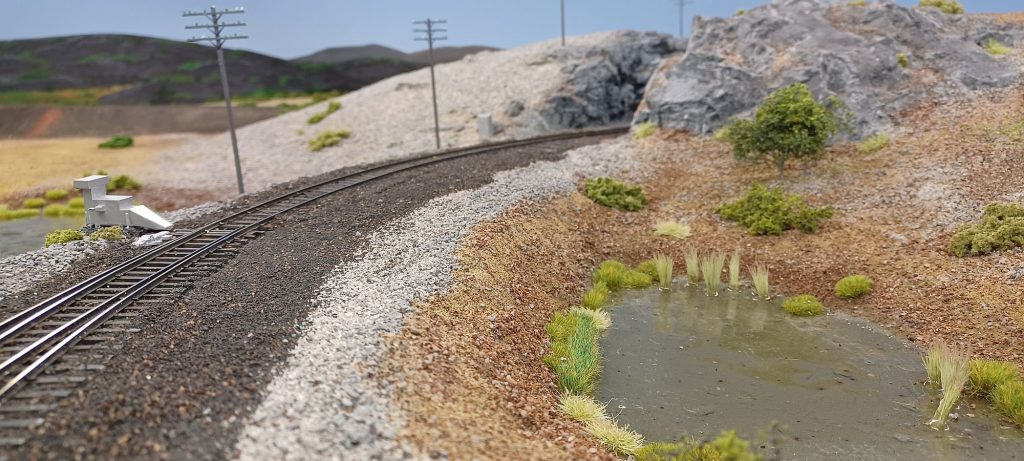
Not just CTC details, we’ve also finished off the swamps surrounding the Parry Sound Sub’s approach into Romford. Oh, incidentally, don’t drink the water here.
We’re starting to get excited about the open house, and wanted to share these photos of our progress. There are many other additions and improvements we’ve made since the Doubleheaders Tours this past spring, let alone last year’s open house. All of this will be here for you to explore this Saturday October 14th. Hope to see you there.

